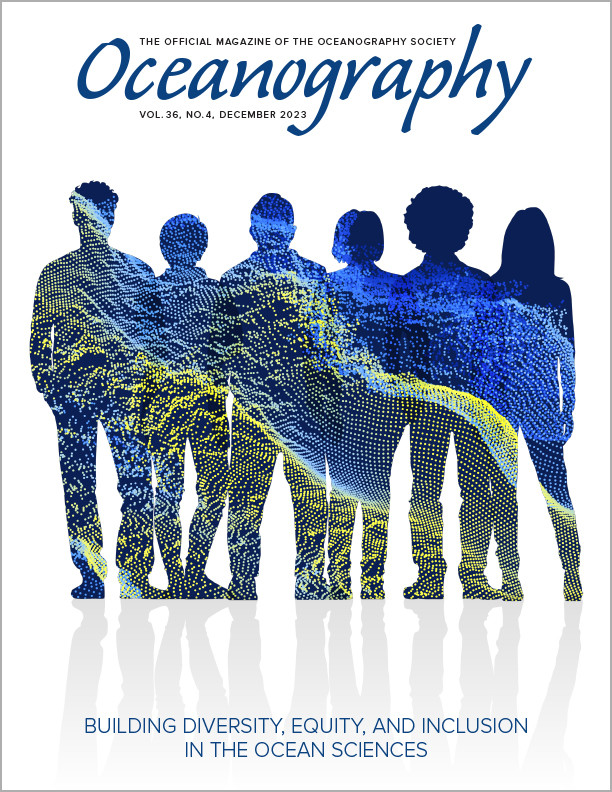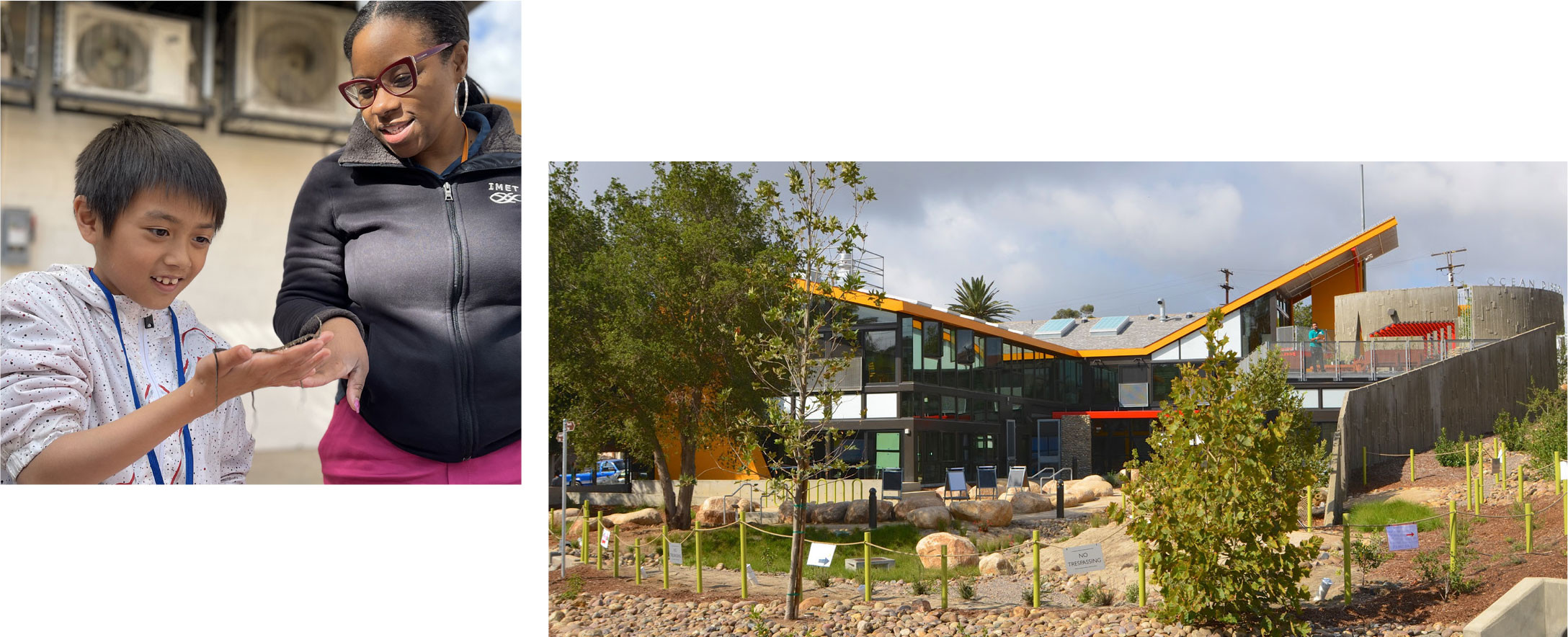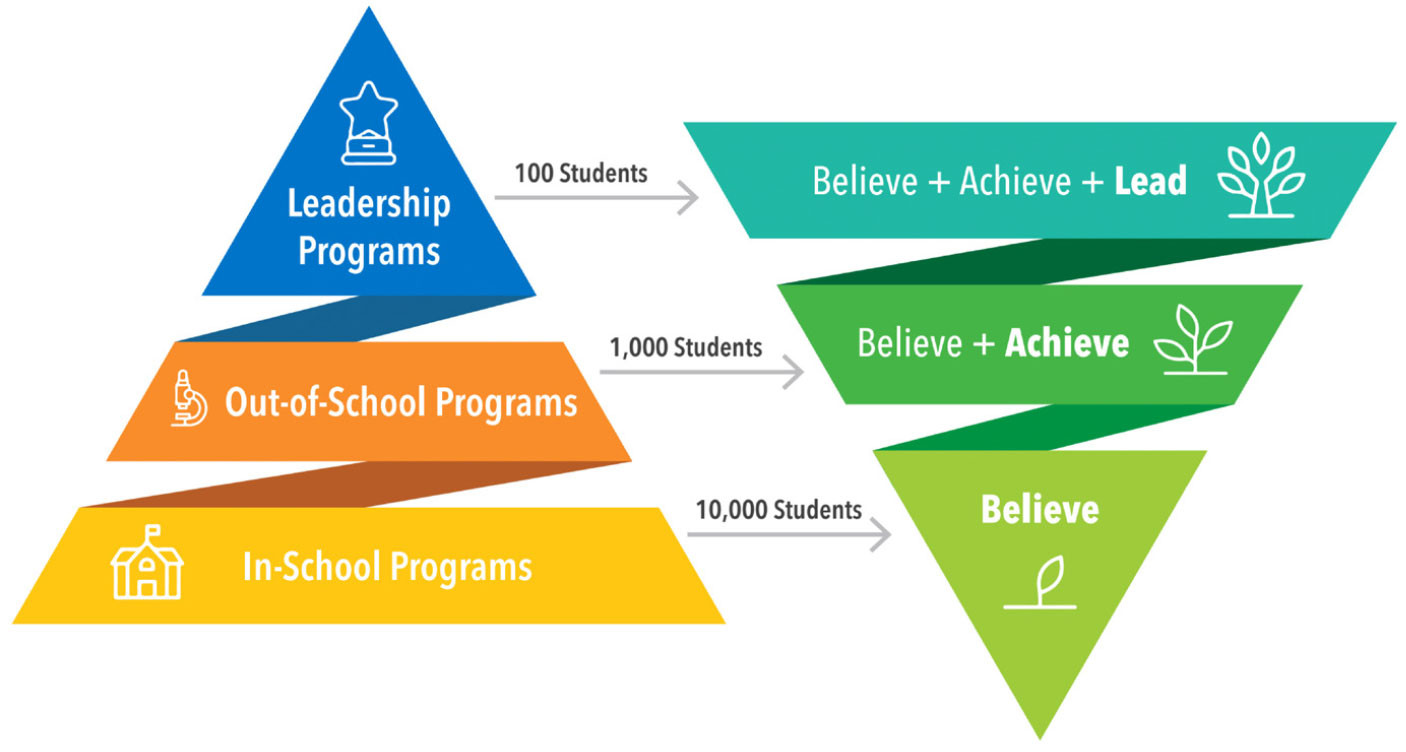Full Text
Background and Mission
Across the United States, there is increasing concern about the poor performance of American students in science and our country’s position as a world leader in innovation (National Science Board, 2022). Furthermore, young people are inequitably prepared to fulfill US workforce needs as educational resources and achievement disparities are magnified in youth from diverse racial and ethnic backgrounds who live in poverty (National Science Board, 2022). These students are less likely to pursue the higher education necessary for science- and technology-based careers (Fry et al., 2021). As a result, the United States’ scientific workforce does not reflect the population of the nation as a whole; for example, Hispanic individuals represent 18.9% of the US population, but only 8% of jobs in STEM fields (Fry et al., 2021). Ocean Discovery Institute, a 501(c)(3) organization, was founded in 1999 to address this problem. Here, we describe Ocean Discovery’s unique model for empowering underrepresented students. It includes (1) being embedded within the community served, (2) reaching all students in a single cluster of schools (a “school-shed”), and (3) a program structure that emphasizes science identity (“belief”) and reinforces it through intentional mentorship.
To inspire the next generation of science leaders, Ocean Discovery creates learning experiences for young people traditionally excluded from science due to race, income status, and educational opportunity. Ocean Discovery operates on a single premise: by participating in high-quality science learning opportunities—using the ocean as a platform to teach about all areas of STEM—underrepresented students develop a passion for science, achieve in school, attend and graduate college, and gain entry to well-paying science fields where they make a difference as science leaders and lift their families out of poverty.
Community Served
Ocean Discovery works in the San Diego community of City Heights, a densely populated area located 10 miles (16 km) inland from the coast. City Heights is rich in ethnic and racial diversity but poor in material wealth and resources. Thirty-four percent of its population of ~85,000 are foreign-born, many of these people are refugees, and collectively the population speaks more than 30 languages (Marcelli and Pastor, 2015). The community is also burdened by poverty, with 43% living at or below 150% of the federal poverty level (Marcelli and Pastor, 2015). Despite the high density of institutions of higher education and scientific industry in San Diego, City Heights offers few opportunities for engagement in science, either inside or outside of the classroom. Consequently, science and conservation are simply not a part of the fabric of life in this community.
Educational Model
Ocean Discovery fills the need for science engagement through implementation of its unique educational model, which consists of three primary components that underpin meaningful and positive outcomes.
1. Ocean Discovery is Community-Driven
The Institute has deep roots within City Heights that date to 2002. This longevity gives the program unique insights into the significant and systemic educational, social, and economic challenges faced by youth in the community and their families. These roots have created a cycle wherein participants become organizational leaders over time: program graduates comprise 24% of Ocean Discovery staff (10 of 42) and 23% of its board of directors (3 of 13).
2. Ocean Discovery Takes a “School-Shed” Approach
Ocean Discovery works in a single cluster of schools that represent a “school-shed” in which, akin to a watershed, students progress from kindergarten through middle school and into one high school. This allows Ocean Discovery to provide multiple and repeated points of contact with cohorts of students for 13 or more consecutive years, serving 10,000 students annually. The “Living Lab” facility (Figure 1) is within walking distance for the majority of schools and families participating in its programs. All programs are 100% tuition-free to reduce financial barriers to participation.
|
|
Collectively, Ocean Discovery’s three levels of programming build science belief in students, support achievement in school, and create leaders in science and related career fields (Figure 2). All programs combine science opportunities, mentorship, and tools to build a growth mindset. In each ascending level of programs, fewer students are served but with increasing hours of participation and greater projected student outcomes. In partnership with San Diego Unified School District, every K–12th grade student in the school-shed participates annually in the In-School Program. K–8th grade students who wish to be more involved outside of school can join the Out-of-School Program and participate in both a week-long, after-school science camp and a week-long, full-day summer science camp. In 9th grade, students can apply to join the Leadership Programs, which offer weekly school-year academic support and college readiness programs as well as intensive summer marine science research.
|
|
3. Establishes and Reinforces Science “Belief”
For all participating students, the In-School Program establishes the critical foundation of science identity: a personal belief that science is something students can do, and a scientist is someone they can be. To reinforce this belief and belonging in science, Ocean Discovery connects its students with volunteer “science leader” mentors, defined as college students and professionals who use science to make a difference in a variety of science and related fields. Mentorship by science leaders benefits both students (by building science identity and finding allies) and science leaders (by providing direct mechanisms for committed mentors to foster science self-efficacy in students). More than two-thirds of Ocean Discovery’s science leader mentors (153 of 231) are people of color who provide representation in the sciences for participating students. Ocean Discovery incorporates science leaders into all programs at a range of scales of time, effort, and interaction. Mentorship can range from a one-time, 30-minute discussion between students and a science leader regarding the leader’s career and personal journey to the “Scientist-in-Residence” opportunity. The latter brings science leaders to the Living Lab’s studio residence (Figure 1) for an immersive one- to two-week experience in City Heights, where they engage daily with students and community members. Ocean Discovery also empowers high school-aged students and program alumni to be near-peer mentors to students in younger cohorts. These relationships with mentors who are of a similar age and who have shared experiences provide role models for success, and they are critical so that students can see their challenges are not unique.
Impacts
Implementation of this model has resulted in unprecedented student impacts and outcomes. Since 2004, 100% of Ocean Discovery’s Leadership Program alumni (220 individuals) have graduated high school, 98% have enrolled in higher education, and 83% have graduated from four-year universities within six years—and 77% of graduates have majored in a science or related field. Additionally, 62% of alumni have entered science or related career fields, including oceanography, biotech, medicine, and environmental education. As a result of students’ achievements, Ocean Discovery was honored with the 2010 Presidential Award for Excellence in Science, Mathematics, and Engineering Mentoring from President Obama. What began as a small, grassroots effort in 1999 is now a nationally recognized model for preparing individuals from the most underrepresented groups to become the scientific leaders we need to help solve societal challenges.
Lessons Learned
- Embed. Being part of the diverse community it serves allows Ocean Discovery to be culturally responsive and relevant and is essential for maximizing impact through building trust and soliciting community input and participation.
- Engage continuously. To truly achieve transformative change for young people in underserved communities, providing science experiences and mentorship and building a growth mindset must start early and be reinforced throughout students’ educational pathways.
- Foster belief. For young people from backgrounds traditionally excluded from science due to race, income, or lack of opportunity, an expectation that they can excel academically and pursue science in college and career is not possible without first establishing science identity—the belief that science is something they can do, and a scientist is someone they can be. Frequent and meaningful interactions with mentors who are representative of students’ racial and socioeconomic backgrounds are essential for establishing science identity, or “belief.”



